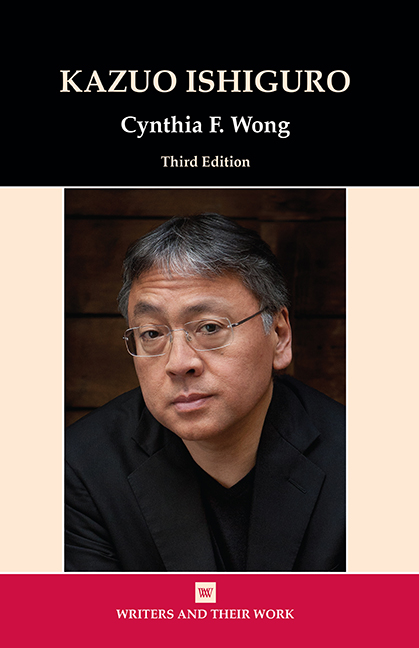Book contents
- Frontmatter
- Contents
- Acknowledgements
- Preface to the Third Edition
- Biographical Outline
- Abbreviations and References
- Introduction
- 1 Ishiguro as an International Writer
- 2 Reading the Novels
- 3 Narrative and Memory: A Pale View of Hills
- 4 Deflecting Truth in Memory: An Artist of the Floating World
- 5 Disclosure and ‘Unconcealment’: The Remains of the Day
- 6 Seizing Comprehension: The Unconsoled
- 7 Odd Failures of Guardianship in When We Were Orphans and Never Let Me Go
- 8 Parody and Performance in Nocturnes
- 9 Cloaked Memories in The Buried Giant
- Notes
- Select Bibliography
- Index
3 - Narrative and Memory: A Pale View of Hills
- Frontmatter
- Contents
- Acknowledgements
- Preface to the Third Edition
- Biographical Outline
- Abbreviations and References
- Introduction
- 1 Ishiguro as an International Writer
- 2 Reading the Novels
- 3 Narrative and Memory: A Pale View of Hills
- 4 Deflecting Truth in Memory: An Artist of the Floating World
- 5 Disclosure and ‘Unconcealment’: The Remains of the Day
- 6 Seizing Comprehension: The Unconsoled
- 7 Odd Failures of Guardianship in When We Were Orphans and Never Let Me Go
- 8 Parody and Performance in Nocturnes
- 9 Cloaked Memories in The Buried Giant
- Notes
- Select Bibliography
- Index
Summary
Life … can be lived with integrity only if death is already accepted as inseparable from it.
Etsuko, the narrator of Ishiguro's first novel, adopts an unusually quiet tone when speaking about her past. She is living in England when she narrates the period shortly after the bombing of Nagasaki. Etsuko's memories are precipitated by her second daughter Niki's spring visit, and she speaks in an oddly calm voice about events that are revealed to have had devastating personal and historical consequences. When the novel begins, the reader learns that Etsuko's eldest daughter, Keiko, had been living estranged from the family for over six years when she was found dead in her Manchester rooms, an apparent suicide by hanging. During Niki's visit, Etsuko is reminded of a woman named Sachiko and her young and disturbed daughter, Mariko, who had lived near her in Nagasaki during the period of the city 's reconstruction. The circumstances of Niki's visit appear pleasant enough, but Etsuko admits that ‘although we never dwelt long on the subject of Keiko's death, it was never far away, hovering over us whenever we talked’ (PVH 10).
As the narrative evolves and as details become paradoxically more clear and murky, the reader discovers that Etsuko remembers the ‘friendship [of] no more than a matter of some several weeks one summer many years ago’ (PVH 11) in order to explain to herself what happened to Keiko. More specifically, the details of Sachiko's life seem to mirror and to foreshadow aspects of Etsuko's own, and her return to this period initially seems to help her mourn for Keiko.
In his aesthetic of reception theory, Georges Poulet describes a process by which people split into two distinct selves as they read into or reread aspects of a significant story: ‘Withdrawn in some recess of myself, do I then silently witness this dispossession? Do I derive from it some comfort, or on the contrary, a kind of anguish?’ Poulet's distinction of a self that experiences life and an ‘other’ self that interprets those experiences provides a useful paradigm for understanding Etsuko's dual roles in her own narrative; it also helps a reader understand how Etsuko can appear so self-possessed and calm when speaking about such tragic events as her daughter 's death and her country's atomic devastation.
- Type
- Chapter
- Information
- Kazuo Ishiguro , pp. 27 - 37Publisher: Liverpool University PressPrint publication year: 2019

